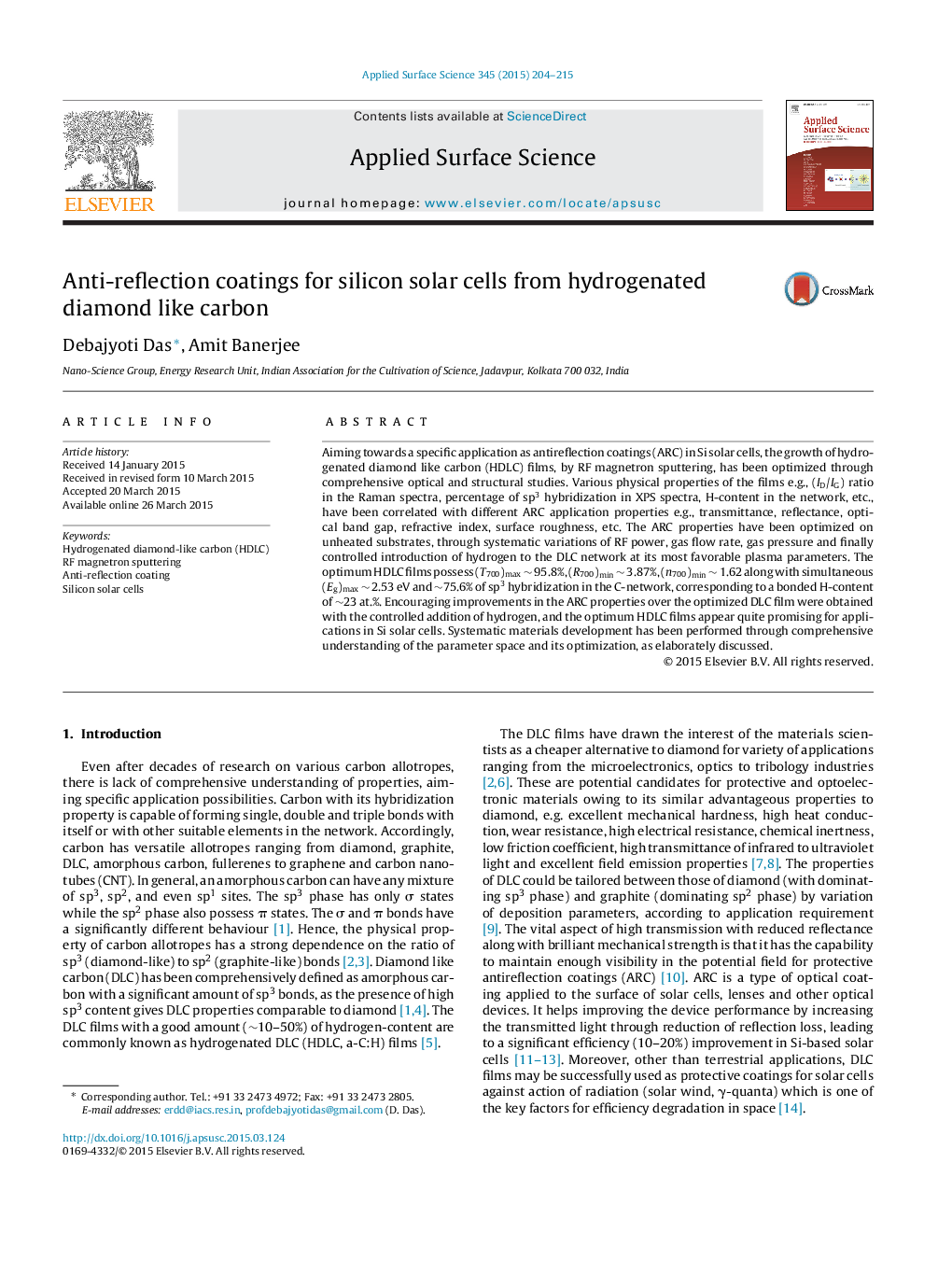| Article ID | Journal | Published Year | Pages | File Type |
|---|---|---|---|---|
| 5355150 | Applied Surface Science | 2015 | 12 Pages |
Abstract
Aiming towards a specific application as antireflection coatings (ARC) in Si solar cells, the growth of hydrogenated diamond like carbon (HDLC) films, by RF magnetron sputtering, has been optimized through comprehensive optical and structural studies. Various physical properties of the films e.g., (ID/IG) ratio in the Raman spectra, percentage of sp3 hybridization in XPS spectra, H-content in the network, etc., have been correlated with different ARC application properties e.g., transmittance, reflectance, optical band gap, refractive index, surface roughness, etc. The ARC properties have been optimized on unheated substrates, through systematic variations of RF power, gas flow rate, gas pressure and finally controlled introduction of hydrogen to the DLC network at its most favorable plasma parameters. The optimum HDLC films possess (T700)max â¼Â 95.8%, (R700)min â¼Â 3.87%, (n700)min â¼Â 1.62 along with simultaneous (Eg)max â¼Â 2.53 eV and â¼75.6% of sp3 hybridization in the C-network, corresponding to a bonded H-content of â¼23 at.%. Encouraging improvements in the ARC properties over the optimized DLC film were obtained with the controlled addition of hydrogen, and the optimum HDLC films appear quite promising for applications in Si solar cells. Systematic materials development has been performed through comprehensive understanding of the parameter space and its optimization, as elaborately discussed.
Related Topics
Physical Sciences and Engineering
Chemistry
Physical and Theoretical Chemistry
Authors
Debajyoti Das, Amit Banerjee,
